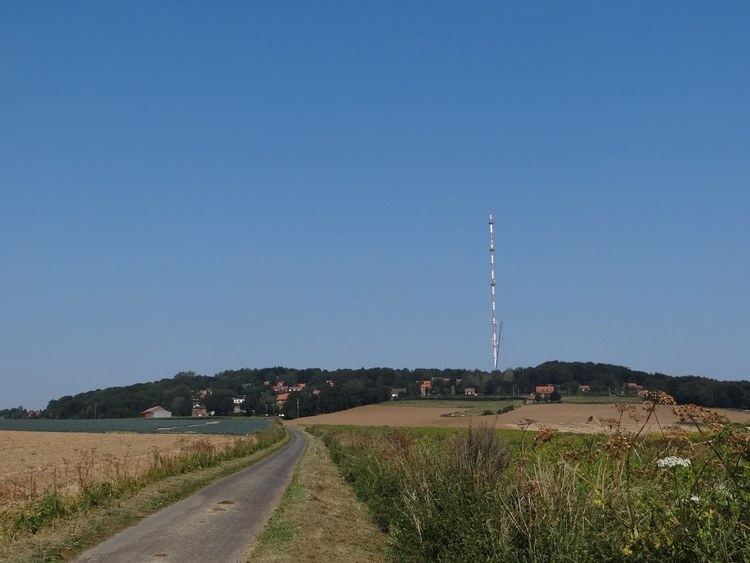Elevation 150 m (490 ft) Length 500 m (1,600 ft) Maximum gradient 14 % | Altitude 45 m (148 ft) Average gradient 9 % | |
 | ||
Similar Mont Noir, Kemmelberg, Jardin du Mont des Récollets, Musée Départemental de Flandre, Le domaine du Bomm | ||
Mont des Cats is a small hill (alt. 164m) near the town of Godewaersvelde, in French Flanders. Its name in Dutch is Katsberg. It is the seat of an abbey bearing the same name, famous for the cheese produced by the monks since 1890.
Contents
- Map of Mont des Cats 59270 Berthen France
- Origin of the name
- Mont des Cats Abbey
- Mont des Cats cheese
- Cycling
- References
Map of Mont des Cats, 59270 Berthen, France
On top of the hill there is an antenna that reaches a height of 364m and transmits both television and radio signals:
The antenna provides part of the Nord Pas de Calais digital television (DTT).
The traditional feast of Saint-Hubert is held on the third Sunday in October.
Origin of the name
The name has nothing to do with cats, but is derived from the name of a Germanic tribe known as Chatti (French: Chattes; Dutch; Chatten), living in the area after the fall of the Roman Empire (5th century).
Mont des Cats Abbey
A first community of the Hospital Brothers of St. Anthony was settled in 1650 and lasted until the French Revolution which closed the monastery in 1792. In 1826, a new community of Trappists (Reformed Cistercians) was funded, and this congregation has run the abbey ever since.
Mont des Cats cheese
Mont des Cats cheese has been produced by the monks since 1890 with the milk of local farms, in a small independent dairy. The production method are similar to those used for Port-salut. Affinage (maturing) takes a minimum of one month and during this period the cheese is washed in salted water and dyed with roucou, a reddish derivative from annatto seeds. The texture of the cheese is firm, uncooked, pressed and has small holes. The fat content is 50%. In Flanders it is sometimes eaten as a breakfast cheese with coffee.
Cycling
The Mont des Cats is regularly included in cycling races in spring, such as Gent–Wevelgem and the Four Days of Dunkirk. It featured once in the Tour de France.
